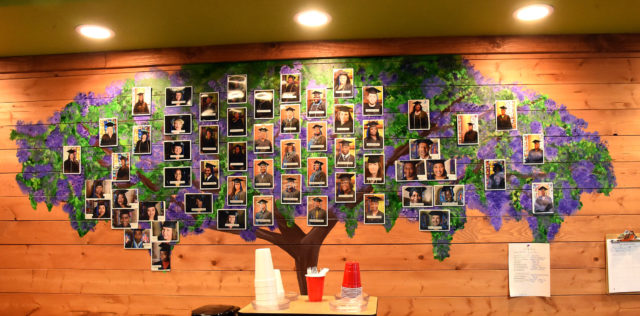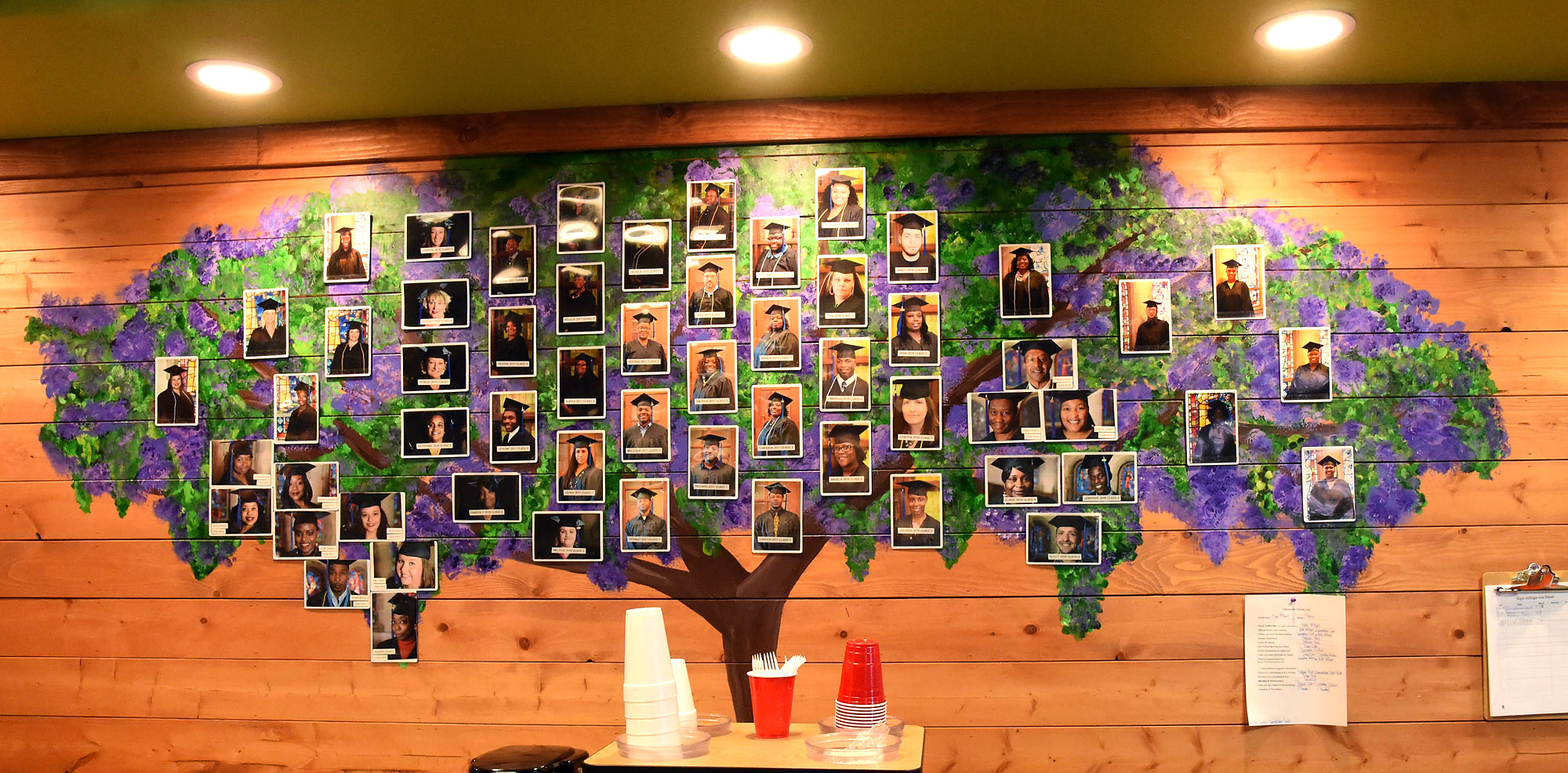
By Erica Wright
The Birmingham Times
Go back to the legislative battle to ensure that more child care centers were regulated in Alabama.
“There were many times things got hard and heated, but we stayed the course and children won as a result,” said Melanie Bridgeforth, president and CEO of The Women’s Fund of Greater Birmingham.
That success can sum up what The Women’s Fund is all about.
“Countless lives will be saved, and thousands of parents will have peace of mind knowing that most child care centers in the state are licensed to meet basic health and safety [standards],” Bridgeforth said.
The Women’s Fund is Alabama’s first and only philanthropic foundation investing, researching, and advocating solely to address the needs of women. With a coalition of supporters, the organization helped get child care center legislation signed into law last year.
Staying the course has allowed the Birmingham-based nonprofit to provide a broad range of benefits to families across the metro area. In 2018, for example, its investments aided 24 grantee partners, 1,394 single mothers, 2,811 women, and 2,661 children. The Women’s Fund is not a direct-service organization but a foundation that funds many programs that serve women.
“We fund and shape change that builds equity for women,” said Bridgeforth. “The reason we exist is because 20 percent of women live in poverty. If you add children to that equation, the number doubles, so nearly half of women with children live in poverty.”
Founded in 1996 by 20 women, The Women’s Fund looks to identify and chip away at systemic root causes of inequities for women, Bridgeforth said.
Some organizations chip away at the top of the iceberg because Alabama families need help and need it now, “but who’s chipping away at the bottom of that iceberg?”Bridgeforth said. “Who’s chipping away at the reason that iceberg exists in the first place? That’s what The Women’s Fund of Greater Birmingham is trying to do when it comes to women.”
In addition to working with its two dozen grantee partners, The Women’s Fund provides support to direct-service nonprofits, community colleges, a university, one advocacy initiative, and one young-women’s initiative; all of these programs are in Blount, Jefferson, Shelby, St. Clair, and Walker counties.
“We are in fellowship with them. We are in the trenches with them, learning along with them, supporting their ideas and innovation. … We are there, walking day-to-day along with our investments to be sure we’re making the most impact,” said Bridgeforth, who has led the organization since 2018.
“Women are more likely to be underemployed, experience wage inequities, … [and face] barriers to transportation and child care. The chances are women and girls are going to face [these issues at] a level men and boys [will] not. … It is about the inclusion of women when we talk about systems that work for Alabamians.”
Strengthening Families
So far in 2019, The Women’s Fund has invested more than $600,000 to support programs and initiatives that help women and their children and ultimately strengthen families.
“We have invested in incredible causes throughout the city and the state, everything from shelters to domestic violence, [as well as] … human trafficking,” said Bridgeforth. “Most recently, [our focus has been] on economic opportunity. You’d be hard pressed not to take any of the issues mentioned and not tie them back to economic opportunity. We believe the most important way to support building equity for women in our state is through economic opportunity, which can open myriad doors.”
For funding, the organization leverages the resources of individuals, nonprofits, corporate partners, and community leaders. Its 2018 income sources included 88 percent from individual and corporate support; 11 percent from grants received from both national and regional private foundations; and 1 percent from endowments.
Research
Research is a large and important part of what The Women’s Fund does, Bridgeforth said: “When you think about how we are constructing our giving to improve the lives of people in our country, the large majority of that is not being targeted to the people who need it most. [Our organization is] filling a really important gap.”
Every spring, The Women’s Fund hosts a research event, Clearing the Path, which focuses on research related to creating a sustainable and inclusive workforce for Alabama.
“We know that women have the second lowest labor-participation rates, so this year’s report and event were really about unpacking why,” said Bridgeforth. “What is it about the system that can be tweaked, adjusted, or completely ripped apart and put back together again to make sure that everyone who wants to participate has the opportunity?”
The report peels back the layers, “so when I say the words ‘gender equity,’ people begin to see there is a gender equity issue,” she said.
“For example, 81 percent of men participate in the labor force, whereas only 61 percent of women participate. The data … shows that there is an equity issue. It’s not about lingering on the problem, … it’s about, how do we begin to change that for women in the workforce?”
Jacob Smith, grants research director for The Women’s Fund, said the organization also sought ways to better use the money it receives. One strategy involved 2Gen, or a two-generational approach, which looked at creating data around two generations of an entire family to see what contributes to change and progress.
One thing the group found is that postsecondary education is a key component in forging pathways to success for women. As a result, The Women’s Fund formed relationships with area community colleges, including Jefferson State Community College, Smith said.
Advocacy
Earlier this year, The Women’s Fund took its advocacy efforts directly to lawmakers in Montgomery during its first-ever Capitol Heels event.
“It was a real opportunity for volunteers and community leaders from all over the state to come together at one time to hear from and talk to decision makers,” said Bridgeforth. “We think that in order to make a difference we have to get elected, and that is not always true. Those people answer to us. … The community decides if those people stay in power, and the community should exercise that right.
“[This] was our way of ensuring that women and our allies are in the halls of the legislature talking about the decisions that are being made. If you’re not at the table, you’re on the menu.”
More than 200 people from across the state came to Montgomery for the gathering of women legislators, business leaders, and community leaders, which involved “… an inspiring dialogue on public policy solutions to accelerate economic opportunity for women, including in-depth discussions with elected officials on issues impacting women,” according to the organization’s website.
Addressing inequities for women means addressing inequities for everyone, Bridgeforth said.
“When you fix the system, everyone wins, everyone rises, everyone gets access to paid leave, everyone gets paid fairly. It’s about really lifting up those who are the least likely to have those outcomes and then literally changing the game for everybody.”
To learn more about or donate to The Women’s Fund of Greater Birmingham, visit womensfundbirmingham.org or call 205-326-4454.















